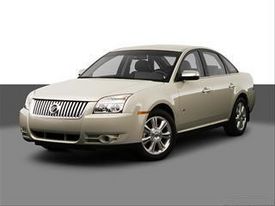.
Full-Size Cars: Difference between revisions
No edit summary |
|||
| Line 27: | Line 27: | ||
Image:07 MAXIMA.jpg|[[Nissan Maxima]] | Image:07 MAXIMA.jpg|[[Nissan Maxima]] | ||
Image:07 GRAND PRIX.jpg|[[Pontiac Grand Prix]] | Image:07 GRAND PRIX.jpg|[[Pontiac Grand Prix]] | ||
Image: | Image:08 AVALON22.jpg|[[Toyota Avalon]] | ||
Image:07 S80.jpg|[[Volvo S80]] | Image:07 S80.jpg|[[Volvo S80]] | ||
<gallery></gallery> | <gallery></gallery> | ||
Revision as of 16:22, 4 December 2007
A full-size car is a marketing term used in North America for an automobile larger than Mid-Size Cars. The American EPA uses "large car" to denote full-size cars.
Full-size is defined in measurement as greater than 120ft of interior volume. Previously, a wheelbase greater than 110 Inches was the criterion. The term first appeared in the early 1960's to define what also became known as "standard" size cars from the new compact and intermediate models then being introduced.
Due to the growing length of wheelbases among mid-size luxury sedan, however, the overall length of the vehicles has become another factor to take into account as well. Full-size cars should therefore also feature an overall length of more than 197 Inches.
Current full-size cars
Ford Crown Victoria(Fleet Only)






















